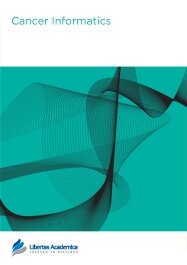

Publication Date: 10 Feb 2015
Type: Review
Journal: Cancer Informatics
Citation: Cancer Informatics 2015:Suppl. 2 17-23
doi: 10.4137/CIN.S17289

Epistasis helps to explain how multiple single-nucleotide polymorphisms (SNPs) interact to cause disease. A variety of tools have been developed to detect epistasis. In this article, we explore the strengths and weaknesses of an information theory approach for detecting epistasis and compare it to the logistic regression approach through simulations. We consider several scenarios to simulate the involvement of SNPs in an epistasis network with respect to linkage disequilibrium patterns among them and the presence or absence of main and interaction effects. We conclude that the information theory approach more efficiently detects interaction effects when main effects are absent, whereas, in general, the logistic regression approach is appropriate in all scenarios but results in higher false positives. We compute epistasis networks for SNPs in the FSD1L gene using a two-phase head and neck cancer genome-wide association study involving 2,185 cases and 4,507 controls to demonstrate the practical application of the methods.
PDF (709.01 KB PDF FORMAT)
RIS citation (ENDNOTE, REFERENCE MANAGER, PROCITE, REFWORKS)
BibTex citation (BIBDESK, LATEX)
XML
PMC HTML


Compared with other journals we considered for publishing, Cancer Informatics provided extremely rapid but quality turnaround from draft submission to a flawlessly typeset final publication. Moreover, sharing the article is now as easy as sharing a link with no subscriptions required, and additional code and data files are equally accessible, supporting reproducible research. Because it has published many of our references we feel confident that our target readership must follow the journal. This is further ...
Facebook Google+ Twitter
Pinterest Tumblr YouTube